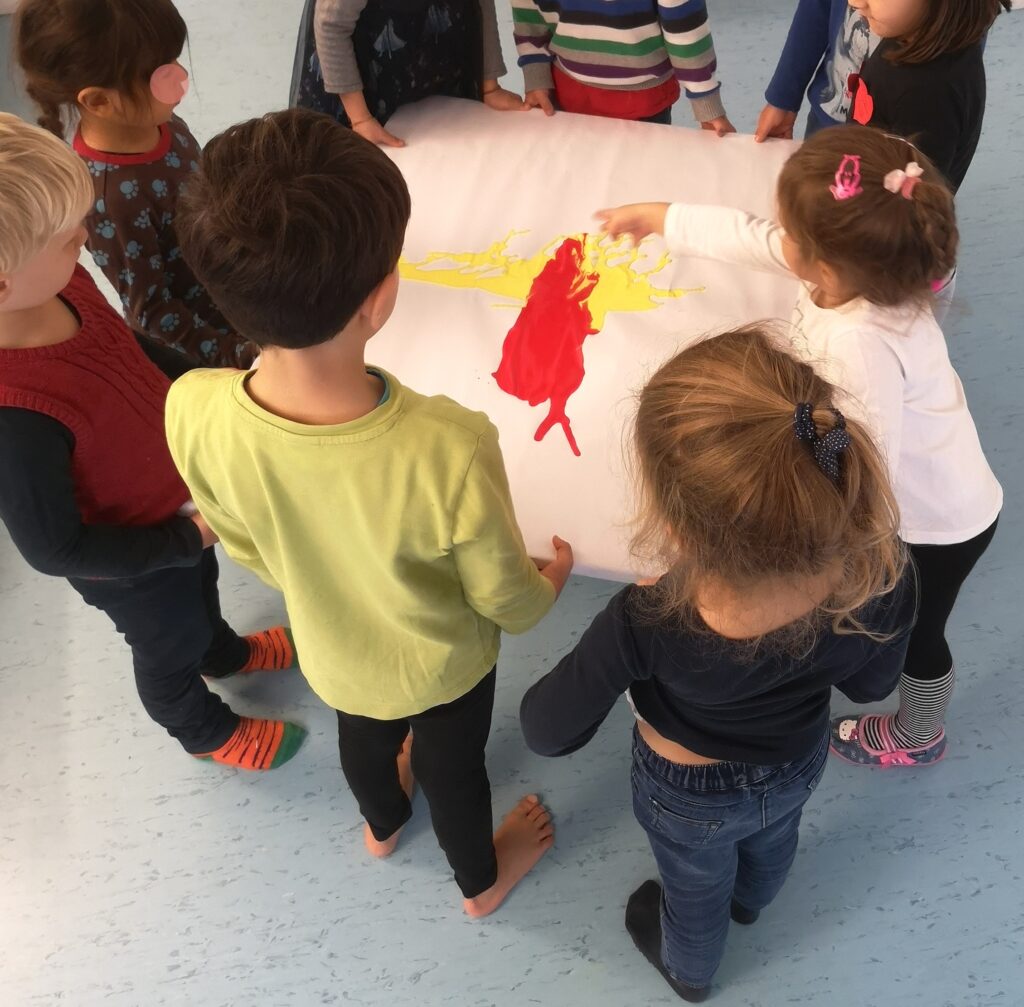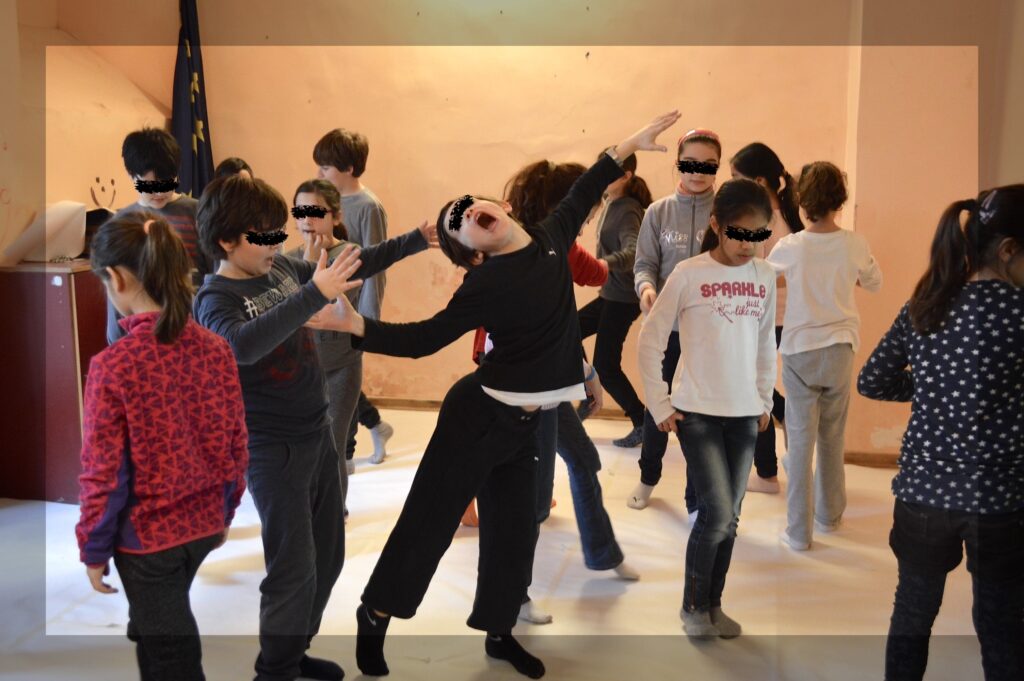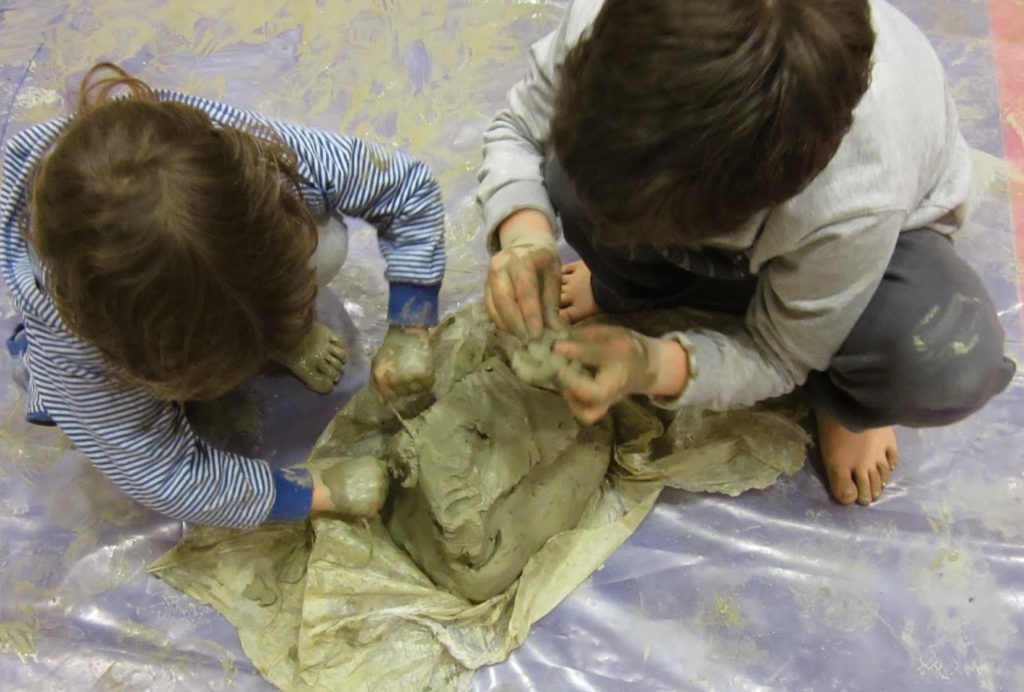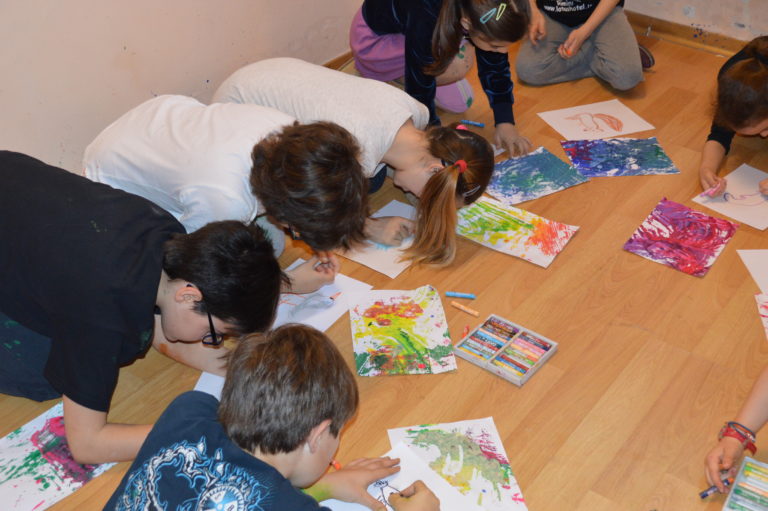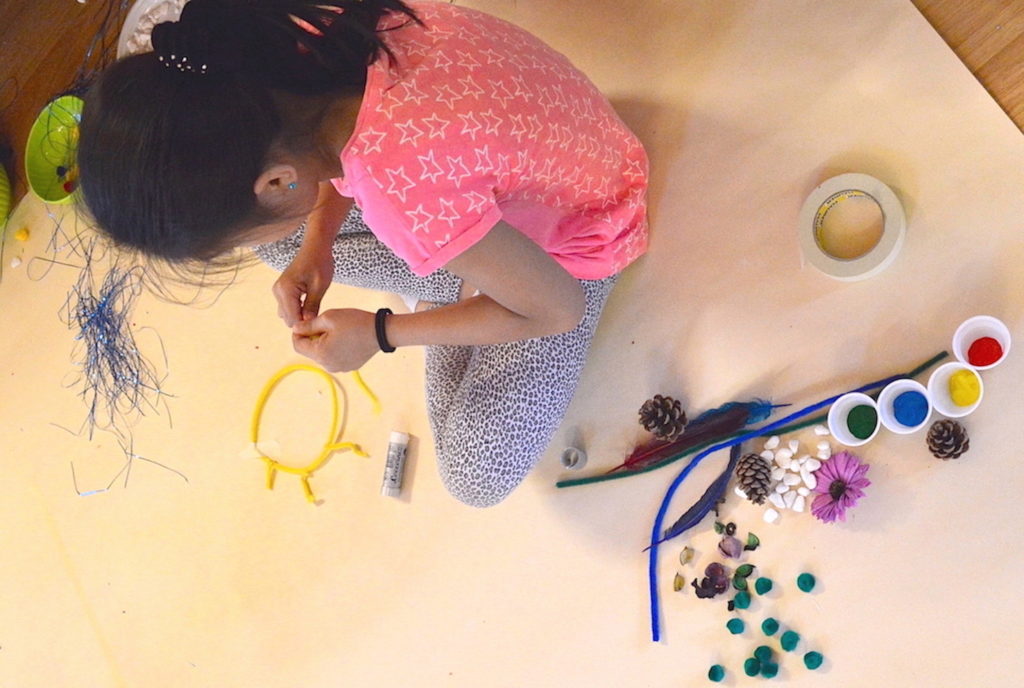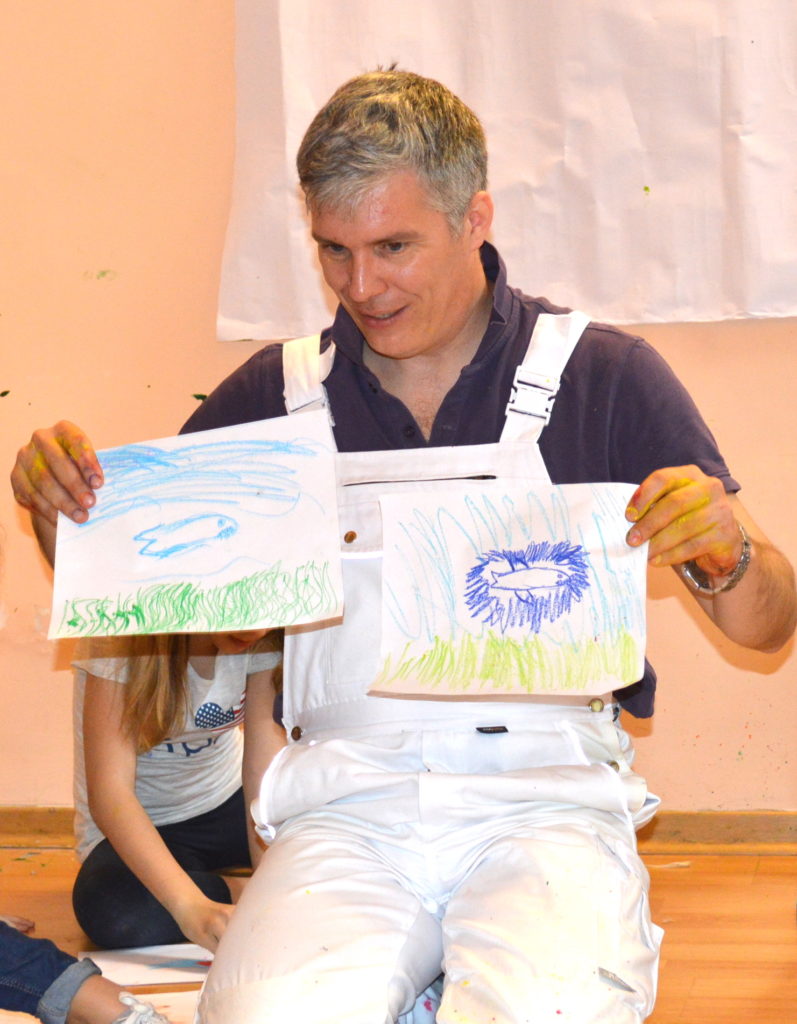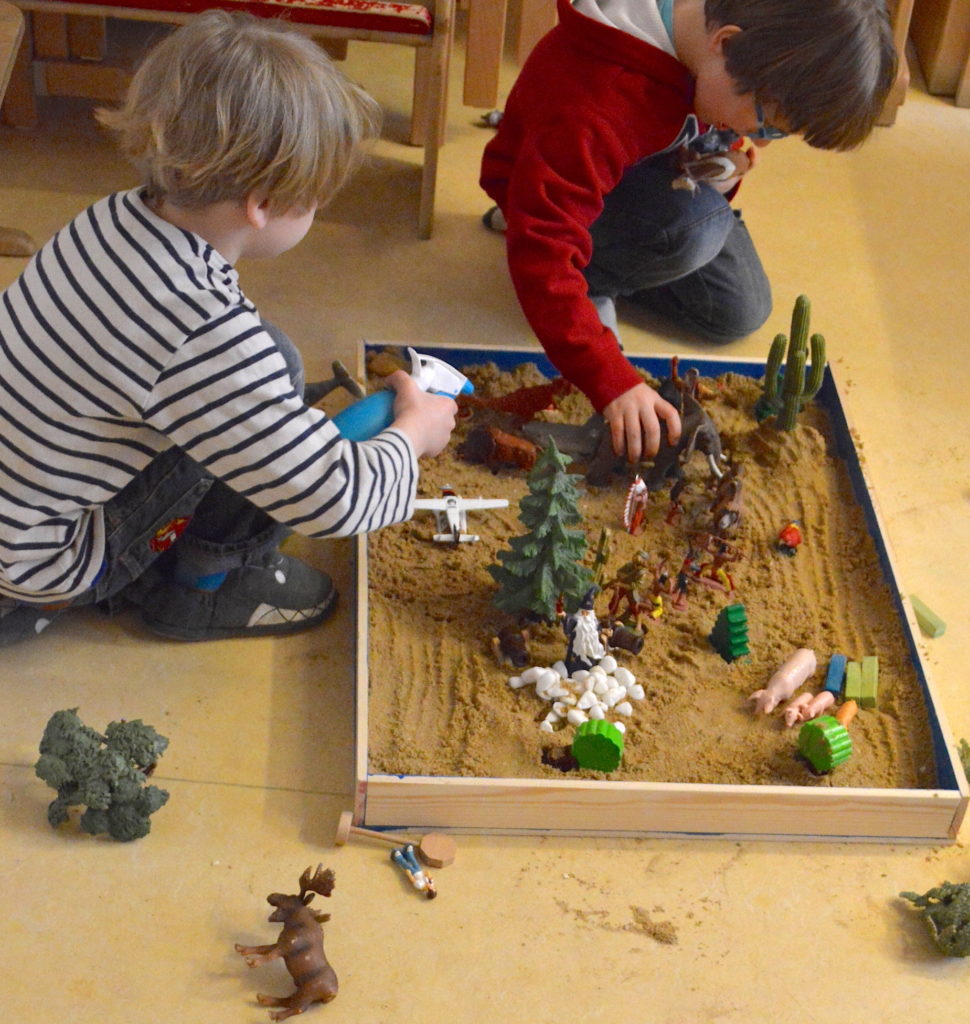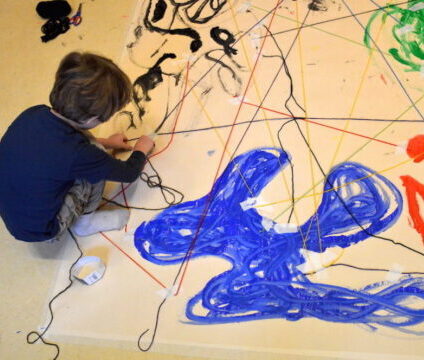Page under revision
 In art therapy with children and teenagers, a free expression of emotions can be achieved, conflicts can be dealt with on a symbolic level, heavy moments in life can be relieved, tensions can be eased, compulsive and anxious behaviour can be reduced.
In art therapy with children and teenagers, a free expression of emotions can be achieved, conflicts can be dealt with on a symbolic level, heavy moments in life can be relieved, tensions can be eased, compulsive and anxious behaviour can be reduced.
At the centre of the activity is also the development of communication and interpersonal skills, as well as the improvement of social skills, maintenance and constancy of concentration. Similarly, self-esteem, self-confidence and autonomy can be strengthened and increased through creative action.
Inhibited children and teenagers find here the opportunity to let go, disinterested ones find a place where they can test themselves and discover things.
Aggressive and hyperactive children and teenagers find in the materials the opportunity to overcome their problems through creative action, to better control their energies by calming down.
The aim of an art therapy workshop is not to arrive at an aesthetically interesting final artistic object, but to derive therapeutic benefits from the creative processes. Through the creative process, the child draws from his unconscious and inner world and expresses himself through the use of artistic materials and the creation of works.
The materials used in art therapy are many. Depending on the conditions in which the workshop takes place, for example, the following materials can be used: fluid colours (watercolours, acrylics, oils), oil pastels, pencils, different types of paper, cloths, modelling clay, stones and wood, photos and video cameras and much more. But light sources, the body, movements and sounds can also be used.
Working in a group and interacting in the group fosters a creative relationship and an exchange and mutual influence that encourages change and evolution in own works.
The group makes it possible to work on relationships and in an art-therapy workshop through the group, cooperation, mutual respect, listening, participation, mutual trust, sense of responsibility, sense of belonging are fostered.
The MEMart (Modular Expressive Art-therapeutic Method) methodology allows alternating phases of group work with those of projection and identification, recomposition, and finally closing with a final verbalisation.
The method I use is non-interpretive: the experiences expressed through the works and dynamics of the participants are not interpreted by the leader but simply observed, listened to and shared in the group. Through group work and individual recomposition, it is possible for the participant to modify his/her works, thus activating the therapeutic process.
Art-therapy workshops can be an effective activity to promote in the class (or inter-class) group certain aspects that are important for the development and well-being of the group. In particular, I would like to mention some of them
– social inclusion,
– emotional expression,
– cooperative skills,
– group and individual creative action,
– narrative skills,
– expression,
– conflict resolution.
Art therapy in the school has been extensively tested with excellent results in relationships within the group, between pupils and the teacher, in the inclusion of subjects at risk of marginalisation, in self-esteem and in cooperative skills.
